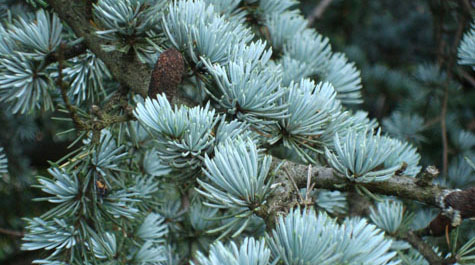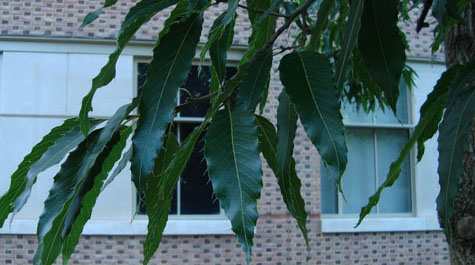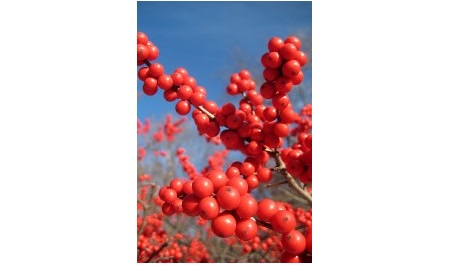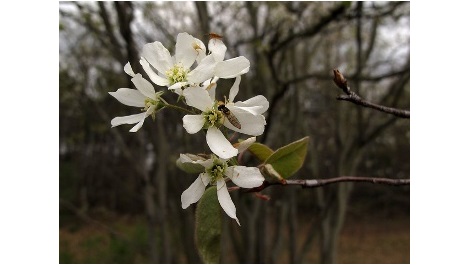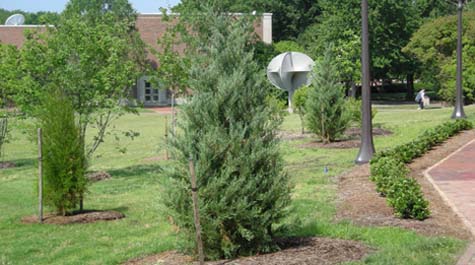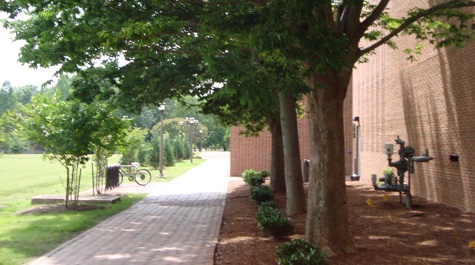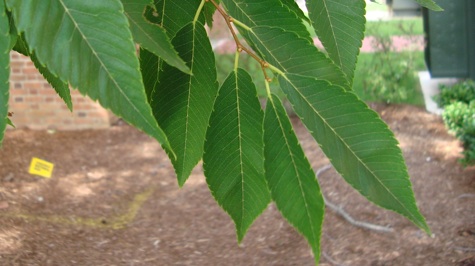Integrated Science Center
Integrated Science Center Landscape
The new Integrated Science Center, spanning 162,000 GSF, houses the departments of biology, chemistry, psychology, and applied science. It supports research and courses across many disciplines, truly living up to its name. While much of the vegetation around the building is newly planted, a few mature trees survived construction, adding character and continuity to the landscape.
Approaching the south side of the building from the west, look for a group of trees against the west facade: a Japanese cedar (Cryptomeria japonica), blue Atlas cedar (Cedrus atlantica), deodar cedar (Cedrus deodara), and sawtooth oak (Quercus acutissima). It’s interesting to note that "cedar" is a common name applied to many trees that aren’t closely related scientifically.
Along this side, younger trees and shrubs include the downy serviceberry (Amelanchier arborea), a small native tree with light gray bark and early white flowers resembling apple blossoms. It produces small dark berries that attract birds and people alike and can be used in jams and jellies, making it an excellent choice for native landscaping.
On the opposite side of the walkway, native winterberry hollies (Ilex verticillata) lose their leaves in fall, revealing bright red berries that persist through winter. For fruit production, be sure to plant both male and female bushes, as one male can pollinate multiple females.
The bluish-hued conifers lining the building’s south end are cultivars of the native Eastern red cedar (Juniperus virginiana cv. ‘Burkii’). At the building’s corner, a mature Japanese zelkova (Zelkova serrata) stands between the sidewalk and the structure. This elm family member is prized for its resistance to Dutch elm disease and was part of the original landscaping here.
Turning the corner toward Chandler Hall, you’ll notice a curved seating wall with an integrated chalkboard—perfect for outdoor lectures or student gatherings. Newly planted bald cypresses (Taxodium distichum) border this wall. While best known for thriving in standing water, bald cypresses are also tolerant of drier soils, and several mature specimens can be found elsewhere on campus.
Cross the street and proceed through the breezeway between Landrum and Chandler halls to continue your tour.
 Skip to main content
Skip to main content

